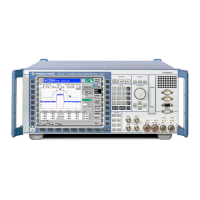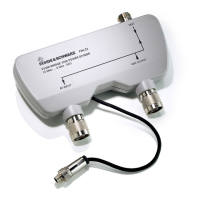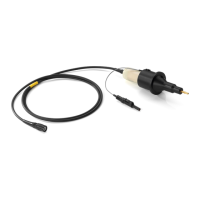CMU RF: Connection Control
1100.4903.12 4.75 E-10
TX Path
Selects the TX signal path, leaving the RX Path unchanged but adapting the I/Q-IF
test scenario to the new RX/TX path combination: If the combination corresponds
to a predefined scenario, then I/Q-IF is set to the predefined scenario; otherwise it
is set to User-defined.
The circuit diagram to the left of the Setup table shows the current RX and TX sig-
nal paths.
Remote control
CONFigure:IQIF:TXPath
BYP | BYIQ | XOIO | IOIO | IOXO | FPAT | UDEF
Table 4-1 I/Q-IF scenarios and path settings
I/Q-IF RX Path TX Path Remark/Application (see also CMU manual)
RX/TX Bypass Bypass Bypass No I/Q or IF inputs/outputs connected
Direct signal analysis and transmission with full
measurement accuracy
Byp. w. I/Q-OF OUT Bypass w. I/Q-IF OUT Bypass w. I/Q-IF OUT No I/Q or IF inputs connected
Analysis of received and transmitted signal via I/Q or
IF
I/Q IN/OUT I/Q IN/OUT I/Q IN/OUT Insertion of signal to be analyzed and transmitted on
I/Q level
IF IN_I/Q IN/OUT IF IN_I/Q IN/OUT IF IN_I/Q IN/OUT Additional processing of received and transmitted
signal on IF level (filters etc.) and analysis via I/Q
IF IN/OUT IF IN/OUT IF IN/OUT Insertion of signal to be analyzed and transmitted on
IF level
Fading Bypass I/Q IN/OUT Direct analysis of received signal
Modification (fading) of transmitted signal by means
of an external fading simulator (SMIQ, ABFS)
User-defined Any combination of RX Path and TX Path not
listed above
Any combination of RX and TX test cases listed
above

